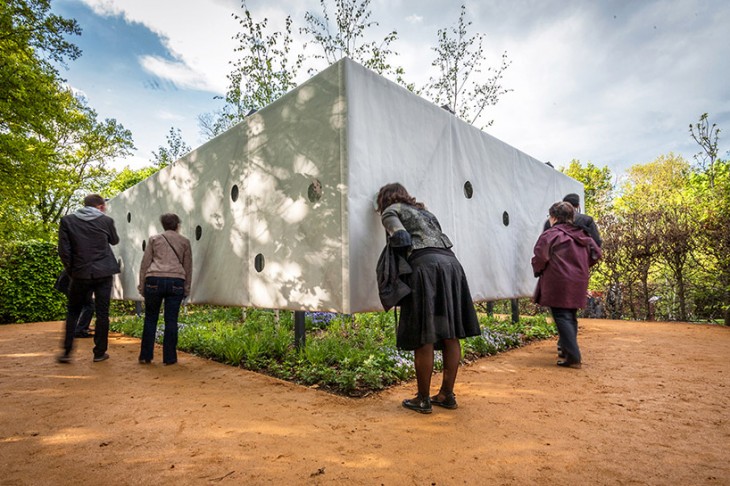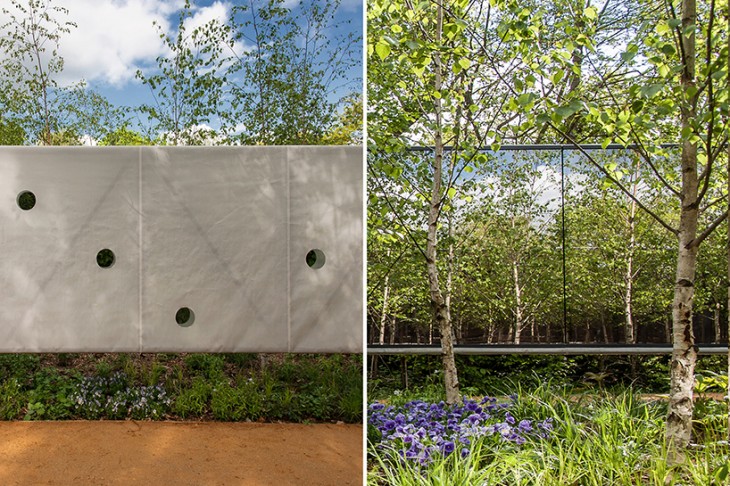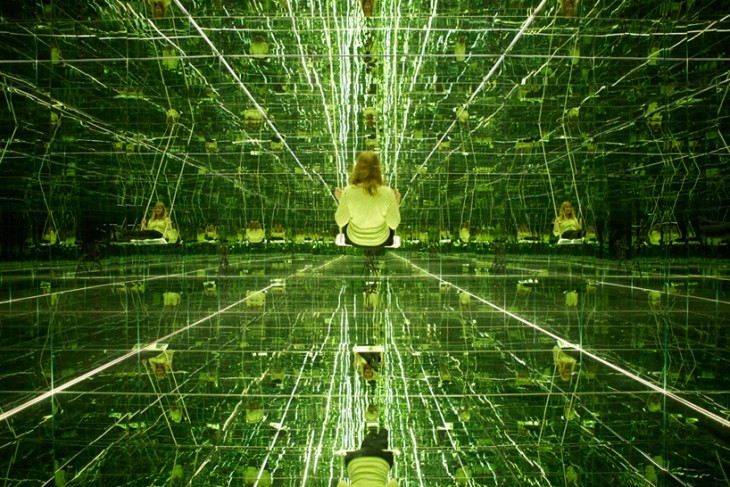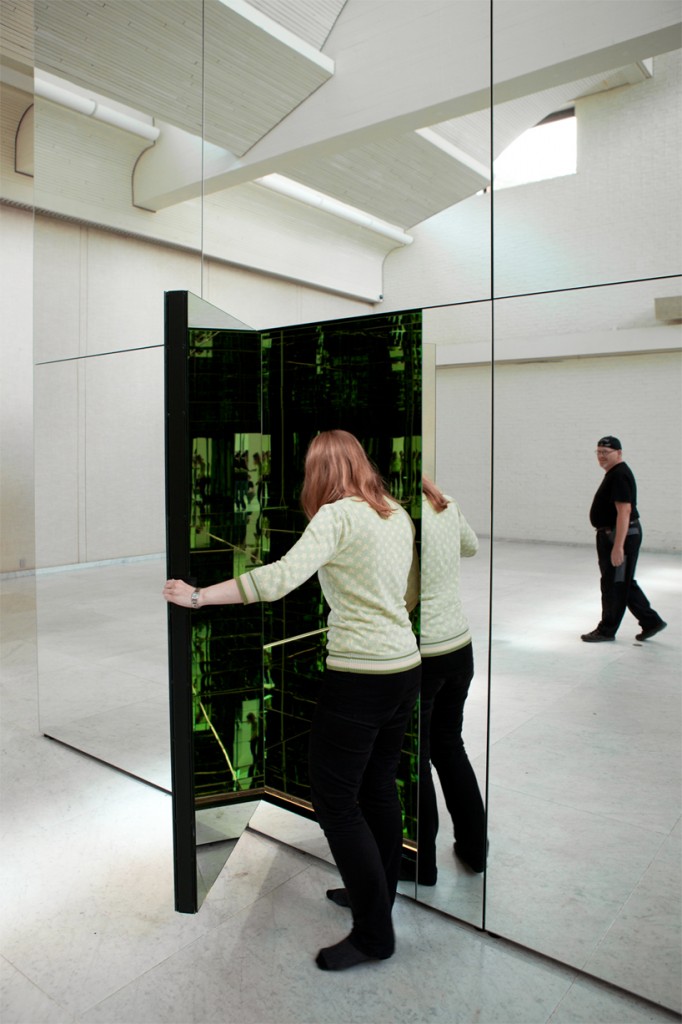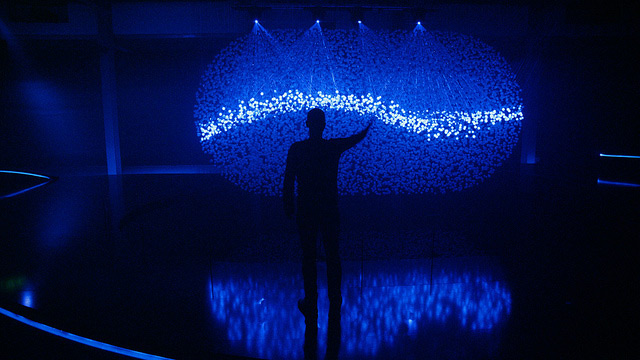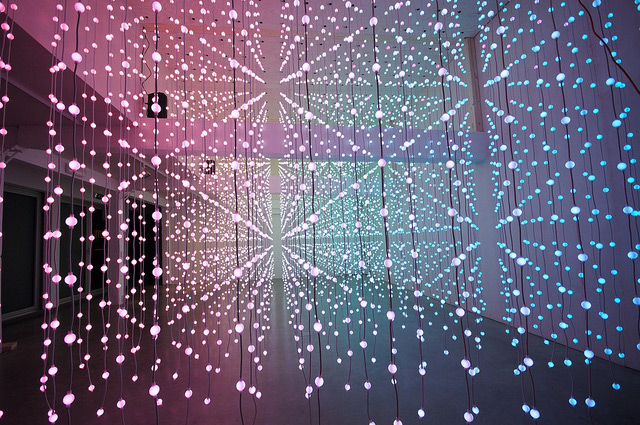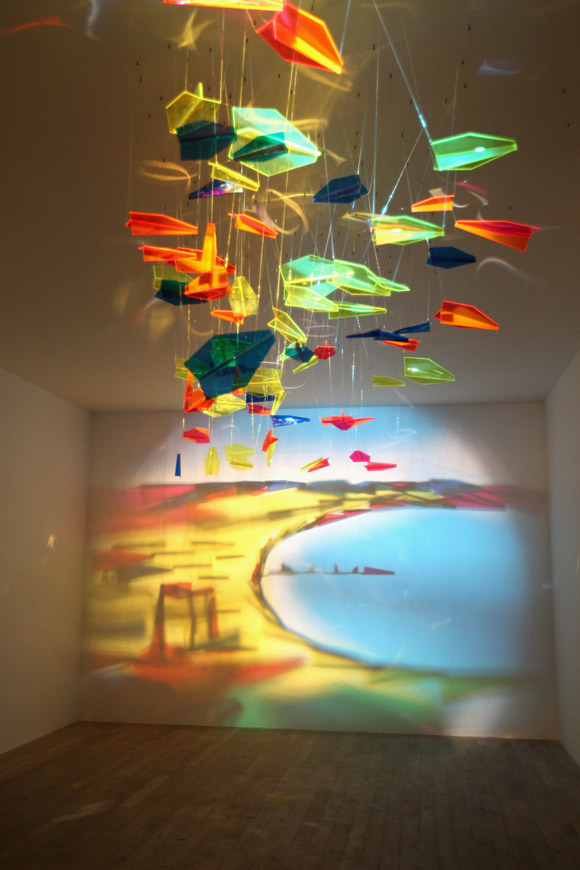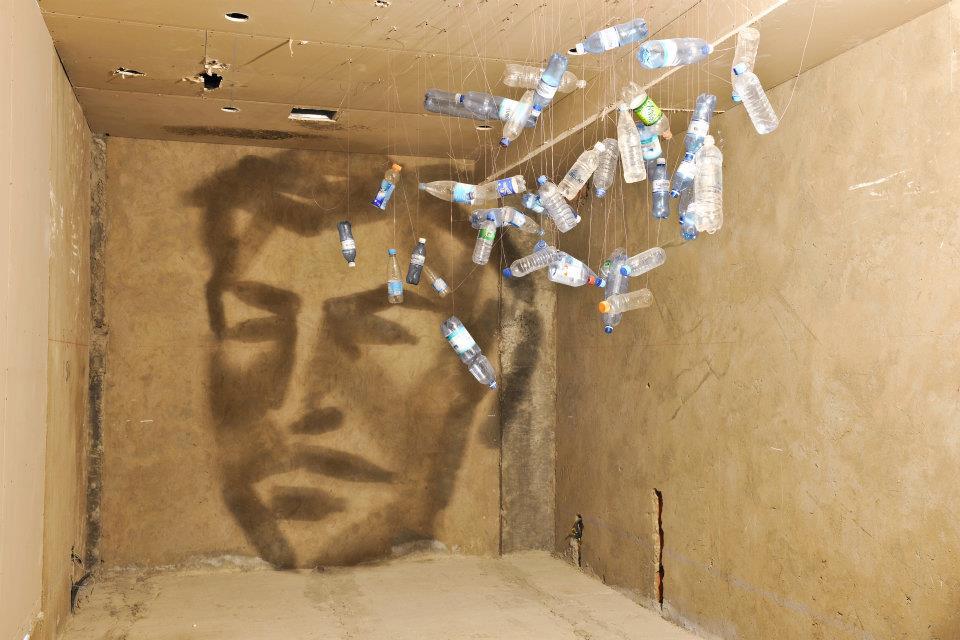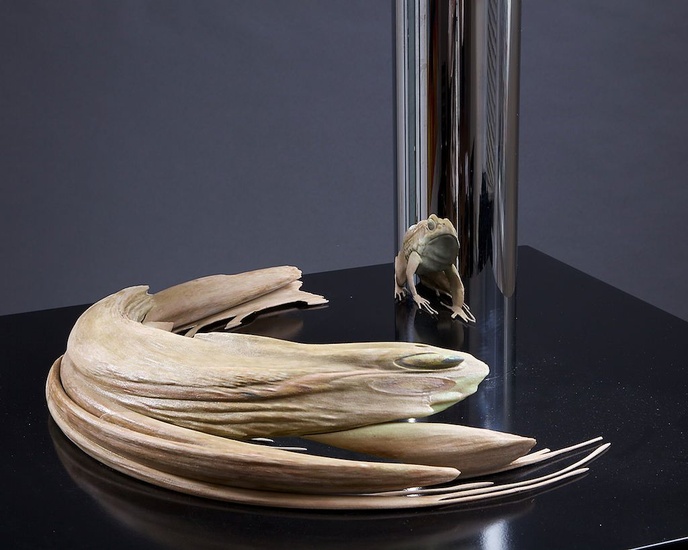Here at the studio we still remember playing as a kid inside a store’s changing room where the mirrors on the left and the right were on hinges. This allowed us to turn them to face each other and we could step between them and see ourselves disappear into what seemed like infinity.
We as humans seem to have an affinity to peer into infinity.
Thinking about this the incredible appeal of peering into the infinite is one that is filled with mystery, the unknown, a world beyond our own. It taps into the human desire to explore and understand.
Several recent installations allows us to explore this both as the participant and the observer. As observer one can explore the infinite with “Outside In” a work for the 22nd International Garden Festival of Chaumont Sur Loire, France created by architects Meir Lobaton corona and Ulli Heckmann.
This work allows us to look into an infinite garden. It would seem that in this piece the longing of wanting to explore the space might be even more pronounced since one is actually outside and “just outside” too.
The second experience is “The Phoenix Is Closer Than It Appears” created by Thilo Frank. In this piece the observer is at the core (literally) and part of the infinity.
The work actually has two points of view. Here installed at the Museum of Modern Art, Aalborg, Denmark, the outside blends perfectly into the space creating an almost hidden installation.
The second way in which it works is to enter inside where you find yourself at the center of infinity where you are invited to swing.
Here at the studio we are struck by the way these seem to tap into some primal desire of humans to look into infinity and the emotions that evoke. The playfulness, mystery, seeking understanding, are all very powerful.
In creating exhibition design as much as we look for education learning impacts tied to curriculum in today’s modern museum thinking – we strongly urge that we should set emotions such as these at the core of what we are designing as well. While there may in fact need to be more didactic exhibits, paired with experiences that touch these emotional goals, an exhibition can create a much more memorable and impactful outcome. Much like the simple experiences of that infinity we found in the store’s changing room.
